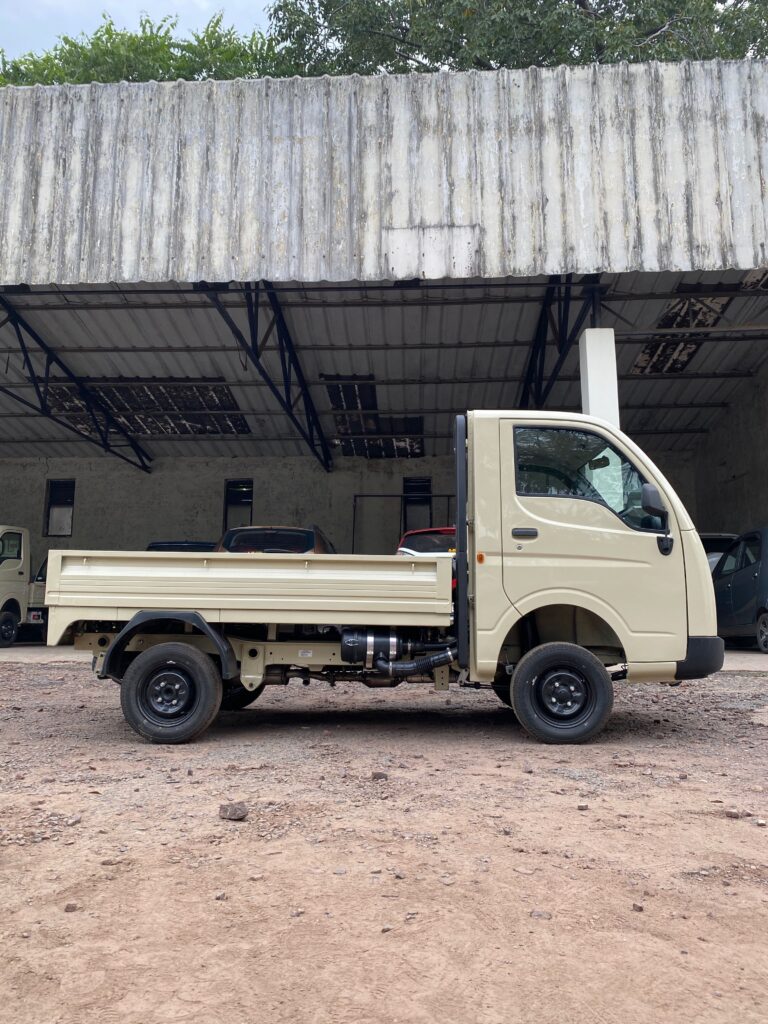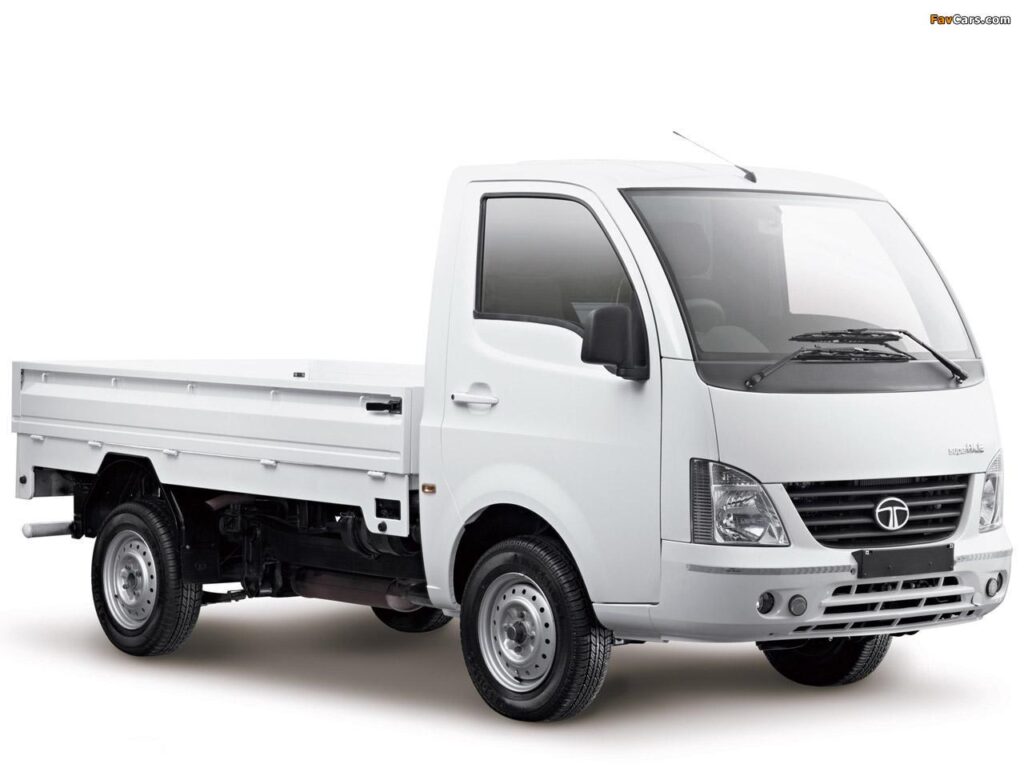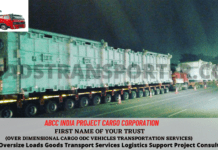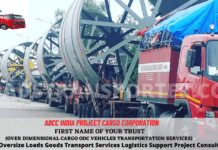The Tata ACE was invented to address a specific need in the Indian transportation market. Here’s the story behind its creation:
Why was it invented?
- Gap in the market: In the early 2000s, there was a significant gap between three-wheeled commercial vehicles (like auto-rickshaws) and larger trucks in India. Three-wheelers were often overloaded and unsafe, while larger trucks were too big and expensive for many small businesses.
- Need for an affordable solution: There was a demand for a small, affordable, and reliable commercial vehicle that could carry light loads over short distances, particularly in urban and semi-urban areas.
- Empowering small businesses: Tata Motors recognized the potential to empower small business owners and entrepreneurs by providing them with a versatile vehicle for transportation and self-employment.
When was it invented?
- Conceptualization: The idea for the Tata ACE was conceived in the early 2000s. Girish Wagh, an engineer at Tata Motors, was tasked with developing a new lightweight truck line to compete with three-wheeled cargo vehicles.
- Market research: Extensive market research was conducted to understand the needs and preferences of potential customers, including three-wheeler owners and small business operators.
- Launch: The first Tata ACE model was launched in India in 2005.
The Tata ACE’s invention was a response to a clear market need, and its launch proved to be a game-changer in the Indian commercial vehicle segment. It created a new category of mini-trucks and went on to become a massive success, transforming last-mile transportation and empowering countless businesses.
Evolution
The Tata ACE has undergone a remarkable evolution since its launch in 2005, adapting to changing market needs and technological advancements. Here’s a look at its journey:
2005: The Original ACE
- The first Tata ACE model was launched with a 702cc diesel engine, offering a balance of affordability and performance.
- It quickly gained popularity for its compact size, robust build, and ability to navigate narrow streets.
2007: Expanding the Lineup
- The passenger variant, Tata Magic, was introduced, catering to public transportation needs.
- This marked the beginning of the ACE platform’s diversification.
2009: Power and Payload
- The Tata Super ACE was launched with a more powerful engine and higher payload capacity, addressing the needs of businesses requiring more hauling capabilities.
- The original ACE was re-introduced as the ACE EX with some upgrades.
2011: Compact and Efficient
- The Tata ACE Zip, a micro-truck, was introduced for navigating congested urban areas and last-mile delivery.
- The Tata Magic IRIS, a smaller passenger variant, was also launched.
2014 – 2018: Refinement and Upgrades
- The Super ACE Mint was launched with further improvements in engine performance and fuel efficiency.
- The ACE Zip CNG variant was introduced, catering to the growing demand for cleaner fuel options.
- The Tata ACE XL offered an extended cargo deck for increased load capacity.
- The ACE Gold was launched with a new design and improved features.
2022 – Present: Electrification
- The Tata ACE EV marked a significant step towards sustainable transportation, featuring an electric powertrain.
- This demonstrates Tata Motors’ commitment to innovation and environmental responsibility.
Key Factors Driving Evolution:
- Customer Feedback: Tata Motors has consistently gathered feedback from customers to understand their evolving needs and incorporate them into new models and upgrades.
- Technological Advancements: The ACE has benefited from advancements in engine technology, fuel efficiency, and safety features.
- Market Demand: The company has responded to changing market demands by introducing variants tailored to specific applications, such as last-mile delivery, passenger transportation, and e-commerce logistics.
- Sustainability: The introduction of the ACE EV reflects the growing emphasis on environmentally friendly transportation solutions.
The Tata ACE’s evolution showcases its adaptability and enduring relevance in the Indian commercial vehicle market. It has not only transformed last-mile transportation but has also empowered countless small businesses and entrepreneurs.
Comparison of Tata ACE: Goods Carrier vs. Passenger Transportation

| Feature | Tata ACE (Goods Carrier) | Tata Magic (Passenger Carrier) |
|---|---|---|
| Purpose | Transporting goods & cargo | Passenger transportation |
| Variants | Tata ACE Gold, ACE HT, Super ACE, ACE CNG, ACE EV | Tata Magic, Magic Express, Magic CNG, Magic EV |
| Seating Capacity | N/A (Driver + 1 Co-driver seat) | 7-10 passengers + driver |
| Payload Capacity | 600-1,000 kg (varies by model) | N/A (Designed for passengers) |
| Engine Options | Diesel, CNG, Electric | Diesel, CNG, Electric |
| Mileage | 20-25 km/l (Diesel), 30+ km/kg (CNG) | 18-22 km/l (Diesel), 25+ km/kg (CNG) |
| Usage Sectors | E-commerce, Agriculture, FMCG, Industrial, Logistics | Public transport, school vans, rural mobility |
| Vehicle Structure | Open or covered loading area | Fully enclosed cabin with seats |
| Comfort Features | Basic seating, power steering (optional) | Cushioned seats, better ventilation, safety handles |
| Legal Category | Light Commercial Vehicle (LCV) | Passenger Commercial Vehicle (PCV) |
| Top Speed | 60-80 km/h | 60-70 km/h |
| Safety Features | Seat belts, durable chassis, optional ABS | Seat belts, sturdy frame, optional ABS |
| Price Range | ₹4.5 – ₹7.5 lakh (varies by model) | ₹5 – ₹8 lakh (varies by model) |
| Best For | Small businesses, goods transporters | Public transport, shared mobility |
Conclusion
- Tata ACE (Goods Carrier) is ideal for businesses needing a compact, fuel-efficient mini truck for last-mile goods delivery.
- Tata Magic (Passenger Version) is perfect for public transport, especially in rural and semi-urban areas, providing an affordable travel solution.
Both models serve distinct purposes but share the same DNA of reliability, affordability, and efficiency in their respective categories. 🚛🚐
Tata ACE Market: Local vs. Global Comparison

| Feature | Local Market (India) | Global Market (International) |
|---|---|---|
| Availability | Widely available across India | Exported to Africa, South Asia, Latin America |
| Main Users | Small businesses, traders, farmers, e-commerce delivery | Small businesses, logistics companies, transport providers |
| Market Demand | High demand for last-mile connectivity & rural transport | Growing demand in developing countries for affordable transport solutions |
| Fuel Options | Diesel, CNG, Electric | Diesel (dominant), CNG & Electric (limited adoption) |
| Common Uses | E-commerce, agriculture, FMCG, logistics, food vending | Small-scale logistics, construction, rural transport |
| Government Regulations | BS6 emission norms, road tax, subsidies for EVs | Varies by country (emission norms, import taxes, subsidies) |
| Competitive Edge | Low cost, fuel efficiency, easy financing | Affordability, durability, adaptability to rough terrains |
| After-Sales Service | Extensive service network with Tata Motors dealerships | Limited service centers, dependent on local partnerships |
| Customization | Modified for food trucks, mobile shops, refrigerated transport | Adapted for region-specific cargo needs, mobile businesses |
| Challenges | Competition from other mini trucks & electric startups | Import duties, lack of local service centers, compliance with foreign regulations |
| Future Growth Potential | Strong, with rising demand in logistics & EV segment | Expanding, especially in developing economies with high transport needs |
Conclusion
- Local Market (India): Tata ACE dominates the last-mile delivery segment with extensive dealer networks and strong brand trust.
- Global Market: While expanding, it faces challenges like import duties and service limitations but remains a cost-effective option for small businesses.
With electric variants and growing international demand, Tata ACE continues to strengthen its presence both locally and globally. 🚛🌍
All Models

| Model | Length (mm) | Width (mm) | Height (mm) | Weight Capacity (kg) | Approx. On-Road Price (₹) | Mileage (kmpl) | Annual Maint. (₹) | Resale Market |
|---|---|---|---|---|---|---|---|---|
| ACE Gold | 4300-4500 | 1500-1600 | 1800-1900 | 750-1000 | 5-7 Lakhs | 18-22 | 5,000-8,000 | Good |
| Super ACE | 4500-4700 | 1600-1700 | 1800-1900 | 1000-1250 | 6-8 Lakhs | 16-20 | 6,000-9,000 | Good |
| ACE HT | 4500-4700 | 1600-1700 | 1800-1900 | 1000-1250 | 6-8 Lakhs | 16-20 | 6,000-9,000 | Good |
| ACE Zip | 3800-4000 | 1400-1500 | 1700-1800 | 600-750 | 4-6 Lakhs | 20-25 | 4,000-7,000 | Moderate |
| ACE EV | 4300-4500 | 1500-1600 | 1800-1900 | 750-1000 | 9-11 Lakhs | N/A (Electric) | 3,000-5,000 | Emerging |
| Magic | 4000-4200 | 1500-1600 | 1900-2000 | N/A (Passenger) | 6-8 Lakhs | 18-22 | 5,000-8,000 | Moderate |
| Magic Iris | 3500-3700 | 1400-1500 | 1800-1900 | N/A (Passenger) | 5-7 Lakhs | 20-25 | 4,000-7,000 | Moderate |
Resale Market Details:
- Good: Models like the ACE Gold and Super ACE generally have a good resale value due to their popularity and robust build.
- Moderate: Models like the ACE Zip and passenger variants (Magic, Magic Iris) have a moderate resale value. Factors like condition, age, and usage play a significant role.
- Emerging: The ACE EV is a relatively new model, so its resale value is still developing. Electric vehicles, in general, are a developing market, so predictions are harder.
Important Considerations:
- Fuel Prices: Fluctuations in fuel prices can significantly impact operating costs and affect the demand for different models.
- Maintenance: Regular maintenance is crucial for keeping the vehicle in good condition and maximizing its lifespan.
- Local Regulations: Be aware of local regulations regarding commercial vehicles, permits, and emissions standards.
Again, always consult with a Tata Motors dealer for the most current and location-specific details. This chart is a helpful starting point, but it’s not a substitute for professional advice.
The Tata ACE enjoys several key advantages that have contributed to its widespread success:
- Affordability: One of the primary reasons for its popularity is its competitive pricing. It offers a cost-effective entry point into the commercial vehicle market, especially compared to larger trucks.
- Compact Size and Maneuverability: Its small size makes it ideal for navigating narrow streets and congested urban areas, where larger trucks struggle. This is a significant advantage for last-mile delivery and transportation within cities.
- Versatility: The ACE platform can be adapted for various applications, from carrying cargo to transporting passengers. This versatility makes it appealing to a broad range of customers, including small businesses, traders, and public transport operators. The availability of different body types (open, closed, refrigerated, etc.) further adds to its versatility.
- Fuel Efficiency: The ACE is known for its relatively good fuel efficiency, which helps to keep operating costs low. This is a crucial factor for businesses and individual owners.
- Robust Build Quality: The ACE is built to withstand the rigors of daily commercial use. Its robust construction contributes to its durability and longevity.
- Ease of Maintenance: Generally, the ACE is relatively easy and inexpensive to maintain, which is important for minimizing downtime and keeping running costs manageable.
- Wide Service Network: Tata Motors has a vast service network across India, making it easy to find parts and service centers. This is a significant advantage for owners, especially in remote areas.
- Good Resale Value: Due to its popularity and robust build, the ACE generally holds its value well in the resale market, which is a positive for owners looking to upgrade or sell their vehicles.
- Empowerment of Small Businesses: The ACE has played a vital role in empowering small businesses and entrepreneurs by providing them with an affordable and reliable means of transportation. It has enabled many to start and grow their businesses.
- Job Creation: The ACE’s success has also contributed to job creation in the transportation and logistics sectors.
It’s worth noting that while the ACE has many advantages, it’s not without its limitations. It’s designed for light to medium loads and may not be suitable for heavy cargo or long-distance transport. However, for its intended purpose, the Tata ACE offers a compelling combination of affordability, versatility, and reliability.
While the Tata ACE has many advantages, it also has some disadvantages:
- Limited Payload Capacity: Compared to larger trucks, the ACE has a limited payload capacity. This makes it unsuitable for businesses that need to transport heavy or bulky goods.
- Lower Speed: The ACE’s engine power is generally lower than that of larger trucks, resulting in slower speeds, especially when fully loaded or on inclines. This can be a drawback for businesses that need to make quick deliveries or travel long distances.
- Less Comfortable Cabin: The cabin of the ACE, particularly in older models, can be basic and less comfortable than that of larger trucks. This can be a concern for drivers who spend long hours on the road.
- Ride Quality: The ride quality of the ACE can be bumpy, especially when unloaded or on rough roads. This is due to its light construction and suspension system.
- Safety Features: While newer models offer improved safety features, some older versions may lack advanced safety features like airbags or ABS. This is something to consider, especially for those prioritizing safety.
- Maintenance Costs (Over Time): While initial maintenance is generally affordable, older ACE models can sometimes require more frequent repairs as they age, potentially leading to higher maintenance costs over the long term. This is typical of commercial vehicles in this class.
- Emissions: Older diesel models contribute to air pollution. While newer models and the electric ACE EV address this, older models can be a concern in areas with strict emission regulations.
- Not Ideal for Long Distances: The ACE is primarily designed for short- to medium-distance transport. It’s not well-suited for long-haul trucking due to its limited speed, cargo capacity, and cabin comfort.
- Competition: The mini-truck segment is becoming increasingly competitive, with other manufacturers offering similar vehicles with potentially better features or performance.
It’s important to weigh these disadvantages against the advantages when considering whether the Tata ACE is the right vehicle for your needs. The ACE is a good fit for many small businesses and for specific use cases (last-mile delivery, navigating congested areas), but it’s not a one-size-fits-all solution. If your needs involve heavy loads, long distances, or a strong focus on driver comfort, a larger truck might be a better option.
Best Features of Tata ACE

| Feature | Details |
|---|---|
| Fuel Options | Available in Diesel, Petrol, CNG, and Electric variants. |
| Engine Performance | Powerful and fuel-efficient 700cc – 1400cc engines, offering up to 26 km/l mileage. |
| Payload Capacity | Varies from 600 kg to 900 kg, suitable for different business needs. |
| Compact Size | Small dimensions make it ideal for urban and rural last-mile deliveries. |
| Mileage Efficiency | Best-in-class fuel efficiency, 20-26 km/l for fuel models and 154 km/charge (EV). |
| Comfort & Convenience | Ergonomic seating, digital instrument cluster, USB charger, and easy maneuverability. |
| Safety Features | Equipped with seat belts, sturdy chassis, drum brakes, and ABS (optional). |
| Suspension System | Parabolic Leaf Spring (front) & Semi-Elliptical Leaf Spring (rear) for smooth rides. |
| Customization | Easily modifiable for food trucks, refrigerated transport, and mobile businesses. |
| Low Maintenance Cost | Annual maintenance costs around ₹10,000 – ₹22,000, depending on model. |
| Resale Value | Strong resale market, especially for diesel and CNG variants. |
| Eco-Friendly Options | CNG and Electric models available for lower emissions and operational costs. |
Conclusion
Tata ACE stands out for affordability, fuel efficiency, and adaptability, making it an ideal choice for small businesses, logistics, and last-mile delivery services.
Tata ACE Utility: Single Owners vs. Big Logistics Companies & Transporters

| Factor | Single Owner (Small Business/Entrepreneur) | Big Logistics Companies & Transporters |
|---|---|---|
| Usage Purpose | Last-mile delivery, local transport, personal business use | Large-scale goods transportation, supply chain management |
| Fleet Size | 1-2 vehicles per owner | 50+ vehicles per fleet |
| Primary Business | Small retail, dairy, vegetable & fruit vendors, e-commerce delivery | Courier services, FMCG distribution, industrial logistics |
| Cost Sensitivity | Highly cost-conscious, focusing on affordability & fuel efficiency | Focus on bulk transport efficiency, cost amortization |
| Fuel Preference | Diesel & CNG for lower running costs | Diesel for high mileage & bulk transport |
| Customization Needs | Often modified for food trucks, cold storage, mobile shops | Standardized for efficiency in logistics |
| Maintenance | Self-managed, occasional servicing at local workshops | Regular maintenance contracts with service providers |
| Financing Options | Mostly bank/NBFC loans or micro-financing | Corporate leasing, fleet financing, bulk purchase discounts |
| Technology Adoption | Basic GPS & manual tracking | Advanced fleet management, GPS tracking, telematics |
| Resale & Vehicle Lifecycle | Usually keeps the vehicle for a longer duration before resale | Frequent upgrades, shorter vehicle lifecycle |
| Market Growth | Driven by small business expansion & self-employment | Growing due to e-commerce boom & organized logistics sector |
Conclusion:
- Single owners prefer Tata ACE for its low cost, fuel efficiency, and versatility in small-scale businesses.
- Logistics companies & transporters use it for bulk transport, fleet efficiency, and operational scalability.
Tata ACE serves both individual entrepreneurs & large transport businesses, making it one of India’s most versatile commercial vehicles.
Tata ACE Accidents Rescues and Safety Features
| Feature | Description | Benefit |
|---|---|---|
| Structural Safety | Robust chassis and body construction | Provides a strong foundation for the vehicle and helps protect occupants in case of an accident. |
| Braking System | Hydraulic disc brakes at the front, drum brakes at the rear (in most models) | Offers reliable stopping power, especially important when carrying loads. |
| Load Conscious Reducing Valve (LCRV) | This feature adjusts braking force based on the load being carried. | Helps prevent wheel lockup and improves braking performance under different load conditions. |
| Visibility | Large side mirrors | Provides good visibility of the surrounding traffic, reducing the risk of accidents. |
| Lighting | Bright headlamps and taillamps | Ensures good visibility in low-light conditions. |
| Safety Features in Newer Models | Collapsible steering column, side impact beams (in some models) | Enhanced protection for the driver in case of a frontal collision. |
| Driver Awareness | Comfortable seating and ergonomic controls | Reduces driver fatigue and improves concentration, contributing to safer driving. |
Important Considerations:
- No Airbags: Most Tata ACE models do not come with airbags as a standard feature. This is a key difference compared to passenger cars.
- ABS Availability: Anti-lock Braking System (ABS) may be available in some newer or higher-end models, but it’s not standard across the range.
- Focus on Active Safety: The ACE’s safety features primarily focus on active safety (preventing accidents) rather than passive safety (protecting occupants in a crash). This is typical for light commercial vehicles.
- Load Management: Proper loading and weight distribution are crucial for safe operation. Overloading can significantly affect the vehicle’s stability and braking performance.
- Driver Training: Skilled and responsible driving is essential for preventing accidents. Drivers should be trained in safe loading practices, vehicle handling, and traffic awareness.
Accident Rescue:
- Emergency Services: In case of an accident, the first step is to call emergency services (ambulance, police).
- Vehicle Extrication: If occupants are trapped, specialized tools may be needed to extricate them from the vehicle.
- First Aid: Providing immediate first aid to injured individuals is crucial.
- Roadside Assistance: Tata Motors may offer roadside assistance programs that can help in case of accidents or breakdowns.
It’s crucial to remember that while the Tata ACE has certain safety features, it’s essential to drive responsibly, follow traffic rules, and ensure proper loading to minimize the risk of accidents.
Resale Market India Local and Global

| Feature | India (Local) | Global |
|---|---|---|
| Market Size | Very large and active | Smaller, but growing |
| Demand | High demand, especially for used ACE Gold, Super ACE, and ACE HT | Varies by region, generally increasing for fuel-efficient models and newer variants like the ACE EV |
| Pricing | Competitive pricing, influenced by age, condition, and mileage | Generally higher than in India due to import costs, taxes, etc. |
| Depreciation | Moderate depreciation, holds value well compared to some other commercial vehicles | Depreciation can vary significantly depending on local market conditions and model popularity |
| Factors Affecting Resale Value | * Overall condition (engine, body, tires) * Maintenance records * Mileage * Model year * Local market demand | * Similar factors as in India * Import regulations and taxes * Availability of parts and service * Local competition |
| Popular Platforms | Online classifieds (OLX, Quikr), used vehicle dealerships, direct sales | Online platforms, used commercial vehicle dealers, import specialists |
| Challenges | Ensuring vehicle history and condition, navigating price negotiations | Finding reliable sellers, dealing with import/export regulations, potential language barriers |
| Opportunities | Strong demand creates opportunities for sellers and buyers, potential for refurbishment and resale | Growing markets in developing countries offer opportunities for export and trade |
Key Takeaways:
- India: The Tata ACE has a strong resale market in India due to its popularity, affordability, and versatility. This benefits both sellers and buyers.
- Global: The resale market is developing globally, with increasing demand for fuel-efficient and adaptable commercial vehicles.
- Factors to Consider: The resale value is influenced by various factors, including the vehicle’s condition, maintenance, mileage, and local market dynamics.
- Challenges and Opportunities: Both local and global markets present challenges and opportunities for buyers and sellers. It’s essential to research and navigate the market carefully.
Overall, the Tata ACE’s strong resale value in India and its growing presence in global markets make it an attractive investment for businesses and individuals in the commercial vehicle segment.
Interesting Fact About Tata ACE
1. The “Chota Hathi” Nickname: The Tata ACE is affectionately known as “Chota Hathi” (Little Elephant) in India. This nickname highlights its small size but powerful capabilities, much like a baby elephant.
2. Inspired by a Rickshaw Driver: The idea for the Tata ACE was sparked by a conversation between Tata Motors engineer Girish Wagh and a three-wheeled rickshaw driver. The driver expressed his desire for a safer and more comfortable four-wheeled vehicle for his business, leading to the ACE’s development.
3. A Game-Changer in the Market: The ACE created a new segment in the Indian commercial vehicle market – the mini-truck segment. It disrupted the dominance of three-wheeled vehicles and offered a more efficient and reliable solution for last-mile transportation.
4. Award-Winning Design: The Tata ACE’s innovative design was recognized with the “BBC Top Gear’s Design of the Year Award” in 2006, highlighting its unique approach to meeting the needs of small businesses and entrepreneurs.
5. A Million Sales Milestone: Within just five years of its launch, the Tata ACE crossed the one million sales mark in India, demonstrating its immense popularity and impact on the transportation sector.
6. Global Presence: The ACE is not just an Indian success story. It has been exported to various countries across Asia, Africa, and South America, where it continues to empower businesses and individuals with its versatility and affordability.
7. Diverse Applications: The ACE platform has been adapted for a wide range of applications, including cargo transport, passenger transport (Magic and Magic Iris variants), and even mobile businesses like food stalls and mobile shops.
8. Electric Version: Tata Motors has embraced sustainable transportation with the launch of the ACE EV, an all-electric version of the mini-truck. This reflects the company’s commitment to reducing emissions and promoting eco-friendly solutions.
9. Rural Impact: The ACE has played a significant role in improving rural connectivity and empowering farmers by providing a reliable means to transport agricultural produce to markets.
10. Employment Generation: The ACE’s success has not only benefited businesses but has also created numerous employment opportunities in the transportation and logistics sectors, contributing to economic growth.
TATA ACE Contribution TATA MOTORS Growth
The Tata ACE has been a significant contributor to Tata Motors’ growth in several ways:
1. Market Share and Sales:
- Created a new segment: The ACE created the mini-truck segment in India, capturing a large share of the market previously dominated by three-wheelers.
- Sales volume: The ACE has consistently been a top-selling model for Tata Motors, contributing significantly to overall sales volume and revenue.
- Expanded customer base: It has attracted a new customer base of small businesses and entrepreneurs who previously couldn’t afford larger trucks.
2. Brand Building and Reputation:
- “Chota Hathi” image: The ACE’s popularity and association with the “Chota Hathi” (Little Elephant) nickname have enhanced Tata Motors’ brand image as an innovator and provider of reliable, affordable vehicles.
- Trust and loyalty: The ACE’s reliability and performance have built trust and loyalty among customers, leading to repeat business and positive word-of-mouth marketing.
3. Financial Performance:
- Revenue generation: The ACE’s strong sales have generated substantial revenue for Tata Motors, contributing to its overall financial growth.
- Profitability: The ACE’s competitive pricing and efficient production have helped maintain healthy profit margins for the company.
- Increased market capitalization: The ACE’s success has positively impacted Tata Motors’ market valuation and investor confidence.
4. Product Development and Innovation:
- Platform for innovation: The ACE platform has served as a foundation for developing new models and variants, including passenger carriers (Magic, Magic Iris) and the electric ACE EV.
- Technological advancements: The ACE has driven innovation in engine technology, fuel efficiency, and safety features, benefiting other Tata Motors commercial vehicles.
5. Social and Economic Impact:
- Empowering small businesses: The ACE has enabled countless small businesses and entrepreneurs to thrive by providing an affordable and reliable means of transportation.
- Rural development: It has improved rural connectivity and facilitated the transportation of agricultural produce, contributing to rural economic growth.
- Job creation: The ACE’s success has created numerous jobs in the transportation and logistics sectors.
Overall, the Tata ACE has been a game-changer for Tata Motors, driving its growth in market share, brand reputation, financial performance, and social impact. It has solidified the company’s position as a leader in the Indian commercial vehicle market and continues to contribute to its success.
For Revenue
Investing in a Tata ACE can be a profitable venture for a common man, especially in logistics, delivery services, or rental businesses. Based on current market trends, here’s how a Tata ACE can generate income:
Investment & Potential Income (Approximate Estimates)
| Business Type | Investment (Tata ACE Model & Cost) | Monthly Earnings (₹) | Annual Earnings (₹) |
|---|---|---|---|
| E-commerce Deliveries (Amazon, Flipkart, etc.) | ₹6-8 lakh (new Tata ACE Diesel/EV) | ₹30,000 – ₹60,000 | ₹3.6 – ₹7.2 lakh |
| Local Transport & Rental Services | ₹6-8 lakh | ₹25,000 – ₹50,000 | ₹3 – ₹6 lakh |
| Courier & Logistics (DHL, FedEx, DTDC, etc.) | ₹6-8 lakh | ₹35,000 – ₹70,000 | ₹4.2 – ₹8.4 lakh |
| Vegetable/Fruit Transportation | ₹6-8 lakh | ₹25,000 – ₹45,000 | ₹3 – ₹5.4 lakh |
| Milk & Dairy Distribution | ₹6-8 lakh | ₹30,000 – ₹50,000 | ₹3.6 – ₹6 lakh |
| Waste Collection & Recycling | ₹6-8 lakh | ₹20,000 – ₹40,000 | ₹2.4 – ₹4.8 lakh |
| Electric Tata ACE (EV) for Rental | ₹8-9 lakh | ₹40,000 – ₹80,000 | ₹4.8 – ₹9.6 lakh |
Key Factors Affecting Income
- Company Tie-ups: Partnering with Amazon, Flipkart, or Swiggy Instamart can offer consistent earnings.
- City & Demand: Metro cities have higher demand and better income opportunities.
- Electric vs Diesel Models: EVs have lower maintenance and fuel costs, making them more profitable.
- Maintenance & Insurance Costs: Around ₹12,000-₹25,000 annually, affecting net earnings.
- Resale Value: Tata ACE retains a good resale value, ensuring lower depreciation.
Summary and Conclusion TATA ACE
The Tata ACE, affectionately nicknamed the “Chota Hathi,” has been a game-changer in the Indian commercial vehicle market since its launch in 2005. Its affordability, versatility, and compact size have made it a popular choice for small businesses, entrepreneurs, and individuals involved in last-mile transportation.
Key Points:
- Evolution: The ACE has evolved over the years, with various models catering to different needs, including cargo transport, passenger carrying, and even electric-powered options.
- Market Impact: It created the mini-truck segment in India, disrupting the dominance of three-wheelers and empowering small businesses with a cost-effective and reliable transportation solution.
- Local and Global Presence: The ACE is a dominant player in India and has also gained traction in international markets, particularly in developing countries with similar transportation needs.
- Advantages: Affordability, versatility, fuel efficiency, maneuverability, and a wide service network are key advantages of the ACE.
- Disadvantages: Limited payload capacity, lower speed, and basic cabin comfort are some of its limitations.
- Resale Value: The ACE generally holds its value well in the resale market, making it an attractive investment.
Conclusion:
The Tata ACE has made a significant contribution to India’s transportation landscape and economic development. It has empowered countless small businesses, created employment opportunities, and improved connectivity in both urban and rural areas. While it has limitations, its strengths have made it a popular and enduring choice for last-mile transportation. As Tata Motors continues to innovate and introduce new variants like the ACE EV, the ACE is likely to remain a key player in the commercial vehicle market for years to come.
If you’re considering buying a Tata ACE, it’s crucial to research the different models, assess your specific needs, and consider the factors that will affect your income potential and operational costs. With careful planning and execution, the ACE can be a valuable asset for your business or personal transportation needs.
What is Tata ACE?
Tata ACE is a popular mini-truck (also known as Chhota Hathi) designed for last-mile cargo transportation. It is widely used by small businesses for goods delivery due to its affordability, durability, and fuel efficiency.
What are the different variants of Tata ACE?
Tata ACE comes in multiple variants, including:
Tata ACE Gold (Diesel, Petrol, and CNG)
Tata ACE HT+
Tata ACE EV (Electric)
Tata ACE Mega (Higher payload capacity)
Tata Super ACE (Bigger size & higher power)
What is the mileage of Tata ACE?
Mileage depends on the variant and fuel type:
Diesel – Around 20-22 km/l
Petrol – Around 15-18 km/l
CNG – Around 22-25 km/kg
EV – Range of 154 km per charge (Tata ACE EV)
What is the price of Tata ACE in India?
The Tata ACE price ranges between ₹4.21 lakh to ₹7.50 lakh (ex-showroom). The price varies based on the variant, fuel type, and location.
What is the payload capacity of Tata ACE?
The payload capacity differs by model:
Tata ACE Gold – 750 kg
Tata ACE HT+ – 900 kg
Tata Super ACE – 1000 kg
Tata ACE Mega – 1030 kg
What are the engine specifications of Tata ACE?
Diesel Variant – 700cc, 2-cylinder engine, 20 HP
Petrol Variant – 694cc, 4-cylinder engine, 30 HP
CNG Variant – 694cc, 4-cylinder engine, 26 HP
What are the key features of Tata ACE?
High fuel efficiency
Strong chassis and rugged body
Compact size for easy maneuverability
Comfortable cabin with ergonomic design
Low maintenance cost
Is Tata ACE available in an electric version?
Yes, the Tata ACE EV is available with a 154 km range per charge and fast-charging capabilities.
What is the warranty on Tata ACE?
Tata ACE comes with a 3-year / 72,000 km warranty (may vary based on the model).
Where can I buy Tata ACE in India?
Tata ACE is available at Tata Motors dealerships across India. You can also book it online through the Tata Motors website.











